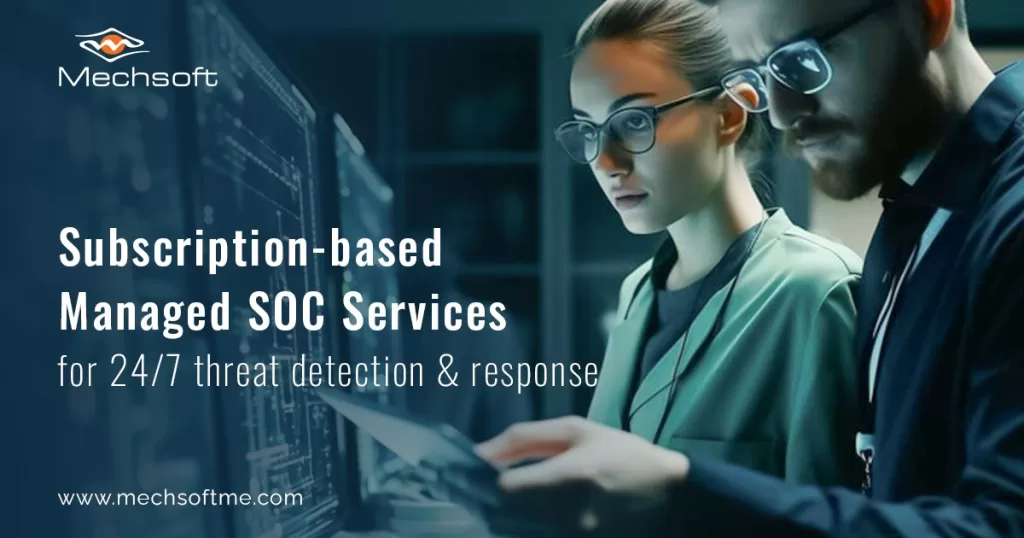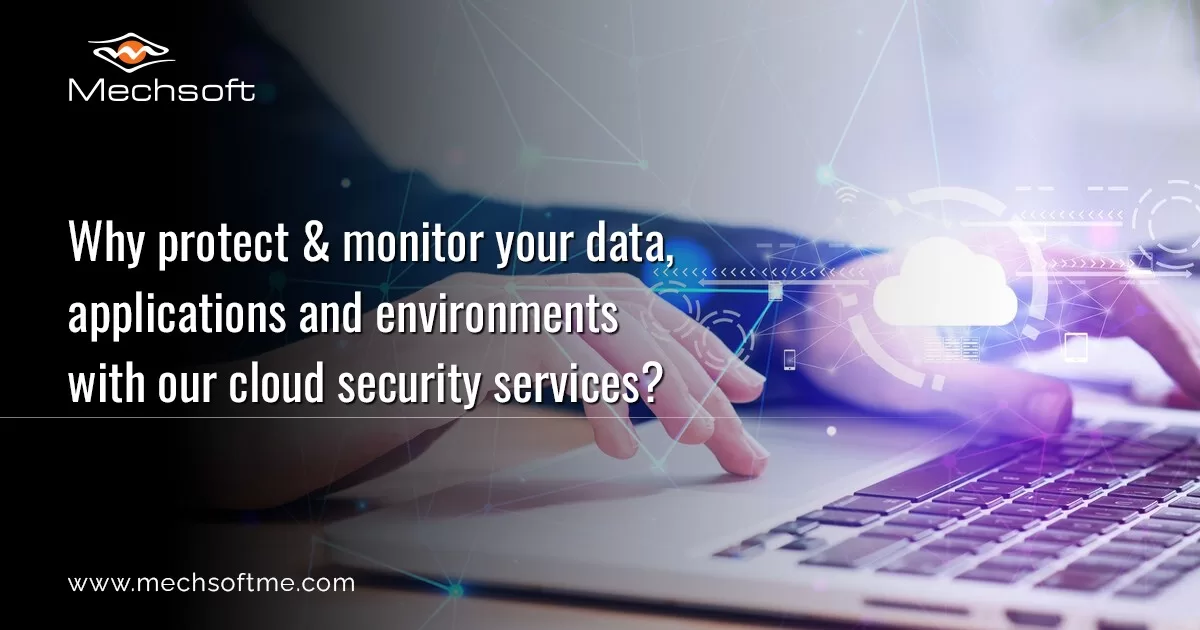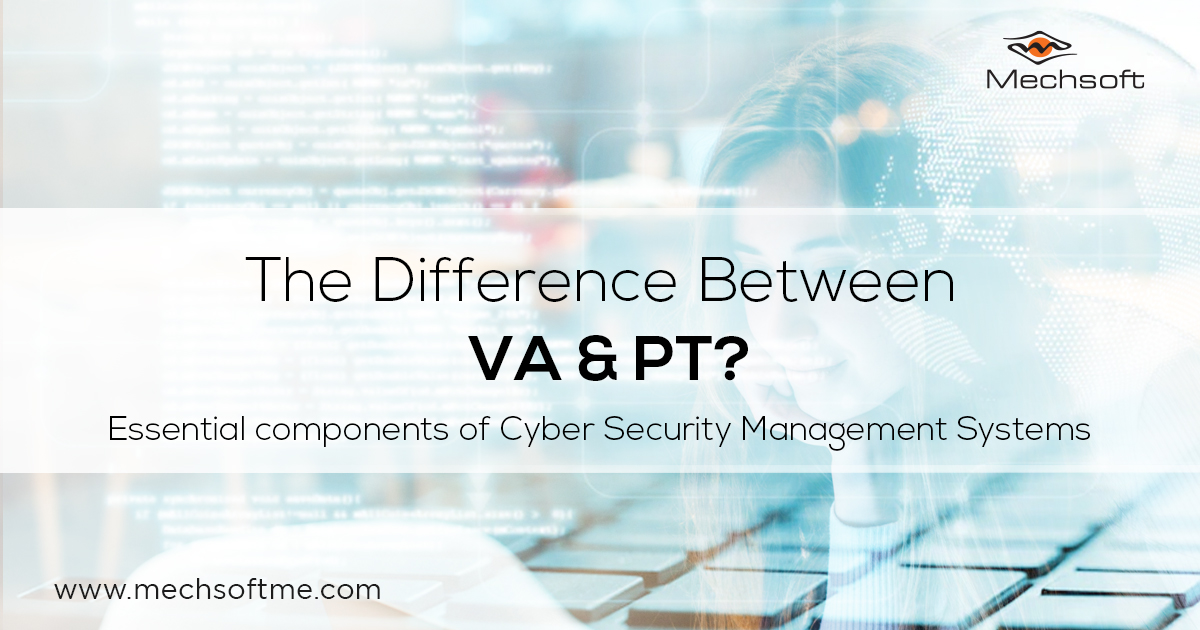Table of Contents
Security Operations Center as a Service (SOCaaS) is a subscription-based, cloud-managed model offering top-tier solutions and capabilities for threat detection and response. It aims to enhance existing security teams by filling in any gaps with best-in-class SOC solutions.
Why do Organizations Need Managed Services for Security Operations?
Today, executives are grappling with soaring security budgets, the looming threat of breaches, and a limited grasp of information security and its optimal management. This trend is driving an increasing number of enterprises to partner with Managed Cyber Security Service Providers (MSSPs).
By doing so, they aim to tap into specialized security expertise and lighten the load on their internal security teams. This move not only strengthens their security organizations with skilled personnel, processes, and technology but also helps safeguard their critical assets and data.
Which Cyber Threats are Monitored by SOCaaS?

Similar to a conventional, on-site SOC, SOCaaS offers round-the-clock monitoring, threat detection, prevention, and analysis of your attack surface.
This includes monitoring internet traffic, corporate networks, desktops, servers, endpoint devices, databases, applications, cloud infrastructure, firewalls, and integrating threat intelligence, intrusion prevention, and Security Information and Event Management (SIEM) systems.
Cyberthreats it addresses include ransomware, denial of service (DoS), distributed denial of service (DDoS), malware, phishing, smishing, insider threats, credential theft, and zero days, among others.
What are the Benefits of SOC as a Service (SOCaaS)?
Outsourcing security operations and information security management yields numerous advantages, such as:
- Lowering costs.
- Quicker detection and more efficient remediation, streamlining security events.
- Access to top-tier security solutions.
- Easing the load on internal SecOps teams.
- Providing continuous monitoring.
- Accelerating detection and response, ensuring high-confidence alerts, and lessening alert fatigue.
- Decreasing turnover and reducing burnout among security analysts by eliminating routine tasks.
- Simplifying complexity.
- Reducing cyber risk.
- Boosting business scalability and agility.
Continuous Protection
Security analysts are tasked with monitoring alerts, events, and indicators of compromise (IoCs).
They integrate high-fidelity threat intelligence and produce actionable threat and impact reports. By learning from analytics and threat detection across all data sources, they generate high-quality leads for threat hunting.
Faster Response Times
Quicker response times cut down on dwell time and enhance both the average time to investigate (MTTI) and the average time to remediate (MTTR).
Threat Prevention and Threat Hunting
SOCaaS enables teams to actively scrutinise environments for attacker tactics, techniques, and procedures (TTPs), aiding in the identification of new vulnerabilities within your infrastructure.
Security Expertise and Coverage
While SOCs vary in form, they typically include roles and responsibilities such as a SOC lead, incident responder, and Tier 1-3 security analysts. They may also feature specialized roles like security engineers, vulnerability managers, threat hunters, forensic investigators, and compliance auditors.
Adherence to Compliance and Regulation Mandates
Essential SOC monitoring capabilities play a crucial role in ensuring enterprise compliance, particularly adhering to regulations demanding specific security monitoring functions and mechanisms like GDPR and CCPA.
Industries like healthcare, finance, and retail must manage risk proactively and adapt to regulatory changes through compliance standards such as HIPAA, FINRA, and PCI, which are designed to protect the integrity of data and personal information from compromise.
Optimize Security Teams
Beyond the investment in security solutions and tools, the human element remains the most crucial factor in any successful SOC.
Factors to Consider When Designing a SOC
Numerous approaches exist for designing and operating a SOC. In their paper, “Security Operations Center: A Systematic Study and Open Challenges,” Manfred Vielberth, Fabian Böh, Ines Fichtinger, and Günther Pernul outline several factors influencing SOC operating models and various considerations involved in implementing one.
Company strategy
Consult the overall business and IT strategy to determine the most suitable operating model. Define a SOC strategy before selecting the appropriate operating mode.
Industry sector
The primary industry sector a company operates in significantly influences the scope of the required SOC.
Size
The company’s size also affects the decision, as a small company may not have the capacity to establish and manage a SOC independently, or it may not even necessitate a highly structured SOC.
Cost
It is essential to assess the expenses associated with setting up and sustaining an internal SOC in comparison to the costs linked to outsourcing security operations. The substantial costs related to sourcing, recruiting, and training SOC personnel must be considered, particularly given the potential for rising skill shortages and heightened market demand.
Time
Setting up a SOC is a time-consuming process, and as such, it requires alignment with the organization’s plans and timelines. Furthermore, it’s important to compare the time required for establishing a SOC with the time necessary for outsourcing this function.
Regulations
Various regulations must be taken into account depending on the industry sector. Some regulations may mandate the establishment of an operational SOC, while others may prohibit outsourcing SOC operations, particularly to providers that fail to comply with the relevant regulations.
Privacy
Privacy falls within the realm of regulation and should always be upheld when handling personal data.
Availability
Availability requirements need to be taken into account, with the common objective being to maintain an operational SOC around the clock, throughout the entire year.
Management support
Securing the commitment of management and effectively communicating the benefits of a dedicated SOC to upper management is of paramount significance during the establishment process. Without this support and communication, the team may not receive the necessary resources.
Integration
When dealing with an internal SOC, it is essential to integrate its capabilities with other IT departments. Conversely, in the case of an external SOC, integration with the provider is required to access all the necessary data.
Data loss concerns
The SOC typically serves as a central hub for processing a significant volume of sensitive data. For internal SOCs, it is imperative to establish robust security measures. In contrast, when dealing with an external SOC, it is crucial to partner with a trusted provider capable of guaranteeing the security of data against both intellectual property theft and inadvertent loss.
Expertise
Acquiring expertise is a process that demands both time and financial resources. The skills essential for effectively operating a SOC are not readily available. Recruiting and retaining personnel represent critical considerations for internal SOCs.
In contrast, external SOC providers typically come equipped with the requisite skills. Particularly within the SOC context, having exposure to various companies can provide SOC providers with a knowledge advantage. Nevertheless, companies need to recognize that outsourcing diminishes their in-house knowledge base.
Why a Managed SOC is Important
Similar to on-premises and hybrid SOCs, managed SOCs come in different types. Like their counterparts, they can monitor an organization’s threat landscape, including their IT network, devices, applications, endpoints (attack surface), and data for known and evolving vulnerabilities, threats, and risks.
Managed SOC services typically come in two models:
Managed Security Services Providers (MSSPs) deploy cloud-based SOCs and utilize automated procedures.
Managed Detection and Response (MDR) places a greater emphasis on direct human intervention, going beyond basic prevention to facilitate proactive and advanced tasks such as threat hunting.
Opting for a managed SOC solution can simplify the challenges associated with overseeing and sustaining an in-house SOC, particularly for small-to-midsize enterprises.
The same principle applies when it comes to locating skilled security personnel to establish and operate a SOC that complies with the continually rising IT security standards and regulations.
Enlisting external security specialists enables organizations to rapidly expand their security coverage and enhance their security stance by accessing threat monitoring and research databases. This can ultimately lead to a more favorable return on investment (ROI) compared to developing an in-house SOC.
Mechsoft Technologies As a SOC-as-a-Service Provider Company
As a leading provider of SOC-as-a-Service in the UAE and broader Middle East, Mechsoft Technologies empowers organizations with cutting-edge solutions tailored to their unique security needs.
Driven by a relentless commitment to Cyber Security, Mechsoft’s expert team delivers proactive threat monitoring, swift incident response, and continuous protection, keeping your valuable data and operations safe.



